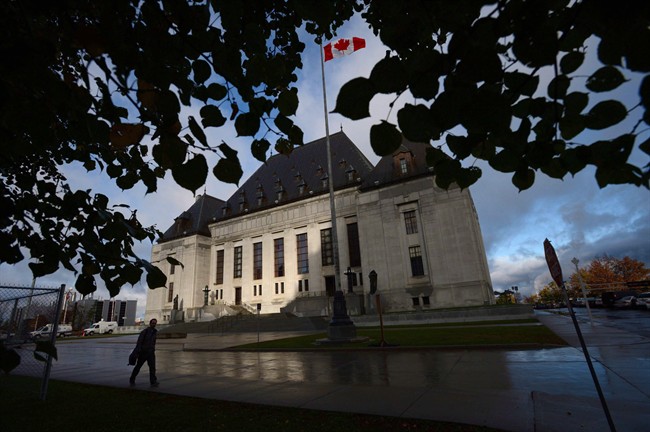The Inuit Hamlet of Clyde River won a nearly six-year battle today to stop seismic testing in the Arctic that could kill or maim the marine mammals upon which they rely for food and jobs.

The Supreme Court issued a unanimous decision determining the National Energy Board failed miserably at properly consulting Inuit and didn’t adequately assess the impact on treaty and Indigenous rights of the proposed oil and gas exploration project before approving it in 2014.
The court quashed the NEB’s approval, meaning the testing can no longer go ahead.
However in a separate but related decision, the Supreme Court upheld the approval granted to Enbridge to reverse the flow and increase capacity of its Line 9 pipeline between Ontario and Quebec.
READ MORE: Canadian oil and gas companies at financial risk due to climate policy: study
In that case, also a unanimous decision, the court found the NEB did properly consult the Chippewas of the Thames First Nation, in southwestern Ontario.
In both cases, the court upheld that the NEB is capable and allowed to fulfil the Crown’s duty to consult Indigenous groups about development projects in their traditional territories, as long as that consultation is robust.
The difference between the two decisions largely stemmed from the fact in the Clyde River case the NEB looked at the environmental impacts of the testing but didn’t specifically look at or address the impact on treaty rights.

Get breaking National news
The NEB also didn’t hold oral hearings, didn’t provide funding to help the Inuit communities participate in the review process and also relied on scientific information provided by the companies which was delivered in a format the Inuit couldn’t access.
In the Enbridge case the NEB consultation process was robust, included adequate opportunity and funding for the Chippewas to participate and specifically addressed the impact on treaty rights.
The NEB found the project posed some risk to the Chippewas territory, but those risks could mitigated. As well, Enbridge didn’t need any new land rights, most work would take place in existing facilities, and would use its existing right of way.
As such, the high court found the consultation process was sound and subsequent approval was acceptable. The work had already been completed and the pipeline operating in its new format and capacity since the fall of 2015, a year before the Supreme Court heard the Chippewas’ appeal.
Clyde River is an Inuit community on the northeast coast of Baffin Island. The residents rely on marine mammals for food, and for economic, cultural and spiritual purposes. They have well-established treaty rights in the region including the right to harvest marine mammals.
Clyde River has been fighting against the seismic testing in Baffin Bay and the Davis Strait since it was first proposed in 2011. The project would have involved measuring underwater resources of petroleum by shooting air guns through the water for five months a year over a five year period.
READ MORE: Global survey on oil and gas finds ‘the world wants more Canada’
The waters in question are adjacent to where Clyde River has treaty rights and it was undisputed that the testing would negatively impact marine mammals in the area, such as whales, seals and polar bears, including raising their risk of death, potentially damaging their hearing and affecting their migration routes.
That assessment meant the Crown’s duty to consult was “at the highest end of the spectrum,” ruled the court.
Yet the consultation “fell short in several respects” the court found.
That included the fact the proponents couldn’t initially answer Inuit questions about the impact on the mammals, and when they did answer them months later, the answers were delivered in a nearly 4,000 page digital document the Inuit couldn’t download because of the poor Internet speeds in the far north.
“To put it mildly, furnishing answers to questions that went to the heart of the treaty rights at stake in the form of a practically inaccessible document dump months after the questions were initially asked in person is not true consultation,” wrote the court.
The court also issued a stern warning that the consultation process on Indigenous rights has to occur before projects are approved.
“True reconciliation is rarely, if ever, achieved in courtrooms,” the judgement says. “Judicial remedies may seek to undo past infringements of Aboriginal and treaty rights but adequate Crown consultation before project approval is always preferable to after-the-fact judicial remonstration following an adversarial process.
“No one benefits – not project proponents, not Indigenous peoples, and not non-Indigenous members of affected communities – when projects are prematurely approved only to be subjected to litigation.”







Comments